A new study suggests that dark streaks on Mars represent flowing sand — not water.
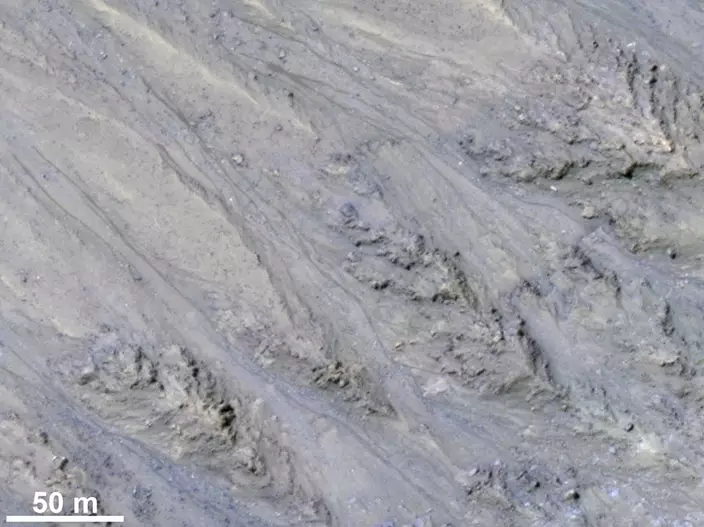
This image provided by NASA shows the inner slope of a Martian crater which has several of the seasonal dark streaks called "recurrent slope lineae," or RSL, that a November 2017 report interprets as granular flows, rather than darkening due to flowing water. Arizona scientists said Monday, Nov. 20, 2017 that these lines appear more like dry, steep flows of sand, rather than water trickling downhill, at or near the surface. (NASA via AP)
Monday's news throws cold water on 2015 research that indicated that lines on some Martian slopes were signs of water currently on the planet. Instead, Arizona scientists report in Nature Geoscience that these lines appear more like dry, steep flows of sand, rather than water trickling downhill, at or near the surface.
If water is present, they said, it's likely a small amount — and not conducive to life.
NASA, though, said the jury is still out.
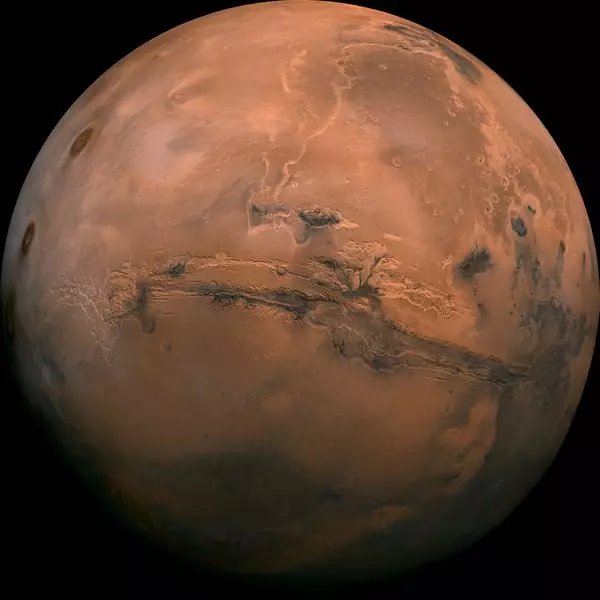
Mars (NASA Photo via AP)
The lead scientist for NASA's Mars exploration program, Michael Meyer, points out that the latest study does not rule out the presence of water. But he acknowledges, "It just may not be as exciting as the idea of rivers going down the sides of cliffs."
NASA's Mars Reconnaissance Orbiter provided the images of these so-called recurring slope lineae, or RSL. Thousands have been spotted on Mars, from the equator midway to each pole.
The team led by the U.S. Geological Survey's Colin Dundas in Flagstaff, Arizona, measured 151 of these dark lines at 10 sites. Most of them end with slopes between 28 degrees and 35 degrees, a match for active sand dunes on both Mars and Earth, according to the researchers. A thin layer of dust on top that shifts and sometimes brightens the surface might help explain why these streaks seem to occur in the Martian summertime and then disappear, only to reappear the next year.
If these lines are dry, "this suggests that recent Mars has not had considerable volumes of liquid water," the researchers write.
That's key because water in liquid form would be essential to microbial life.
Dundas and his colleagues stress that many questions remain, demanding further study.
To Meyer, this is what makes Mars so fun. Scientists have long gone back and forth thinking of Mars as being dry or wet depending on the most recent data.
"I still think that Mars poses a great potential for having had life early on in its history," Meyer said. "As long as that's true, we also have a reasonable possibility of life still being on Mars. It just happens to be cryptic or well hidden."
NASA currently has no rover — either at Mars or in development — capable of climbing such steep slopes. That has engineers coming up with ideas like Martian helicopters or drones.
"But going from a clever idea that works in your sandbox to something that goes to Mars takes a fair amount of engineering development," Meyer said.
UNITED NATIONS (AP) — Russia and Ukraine on Monday traded blame before the United Nations Security Council for the attacks on Europe’s largest nuclear power plant, which the head of the International Atomic Energy Agency said have put the world “dangerously close to a nuclear accident.”
Without attributing blame, IAEA Director General Rafael Mariano Grossi said his agency has been able to confirm three attacks against the Zaporizhzhia Nuclear Power Plant since April 7.
“These reckless attacks must cease immediately,” he told the Security Council. “Though, fortunately, they have not led to a radiological incident this time, they significantly increase the risk … where nuclear safety is already compromised.”
The remote-controlled nature of the drones that have attacked the plant means that it is impossible to definitively determine who launched them, Grossi told reporters after the meeting.
“In order to say something like that, we must have proof,” he said. “These attacks have been performed with a multitude of drones.”
Zaporizhzhia sits in Russian-controlled territory in southeastern Ukraine and has six nuclear reactors.
Fears of a nuclear catastrophe have been at the forefront since Russian troops occupied the plant shortly after invading in February 2022. Continued fighting between Russian and Ukrainian forces — as well as the tense supply situation at the plant — have raised the specter of a disaster.
Ukraine and its allies on Monday again blamed Russia for dangers at the site, with the United States saying, “Russia does not care about these risks.”
“If it did, it would not continue to forcibly control the plant,” U.S. deputy ambassador Robert Wood told the Security Council, which met at the initiative of the U.S. and Slovenia.
Russia, for its part, said Ukraine was to blame for the attacks.
“The IAEA’s report does not pinpoint which side is behind the attacks,” Russia’s U.N. Ambassador Vassily Nebenzia said. “We know full well who it is.”
“Over the last few months, such attacks not only resumed,” Nebenzia said, “they significantly intensified.”
Ukraine’s ambassador to the U.N., Sergiy Kyslytsya, called the attacks “a well-planned false flag operation by the Russian Federation,” which he alleged Russia had designed to distract the world from its invasion of its neighbor.
The Zaporizhzhia facility is one of the 10 biggest nuclear plants in the world. Fighting in the southern part of Ukraine where it is located has raised the specter of a potential nuclear disaster like the one at Chernobyl in 1986, where a reactor exploded and blew deadly radiation across a vast area.
Neither Russia nor Ukraine in recent months has been able to make significant advances along the 1,000-kilometer (620-mile) front line crossing eastern and southern Ukraine. Drones, artillery and missiles have featured heavily in what has become a war of attrition.
Russia and Ukraine have frequently traded accusations over the Zaporizhzhia plant.
The most recent strikes did not compromise the facility, which is designed to withstand a commercial airliner crashing into it, the IAEA said.
The plant’s six reactors have been shut down for months, but it still needs power and qualified staff to operate crucial cooling systems and other safety features.
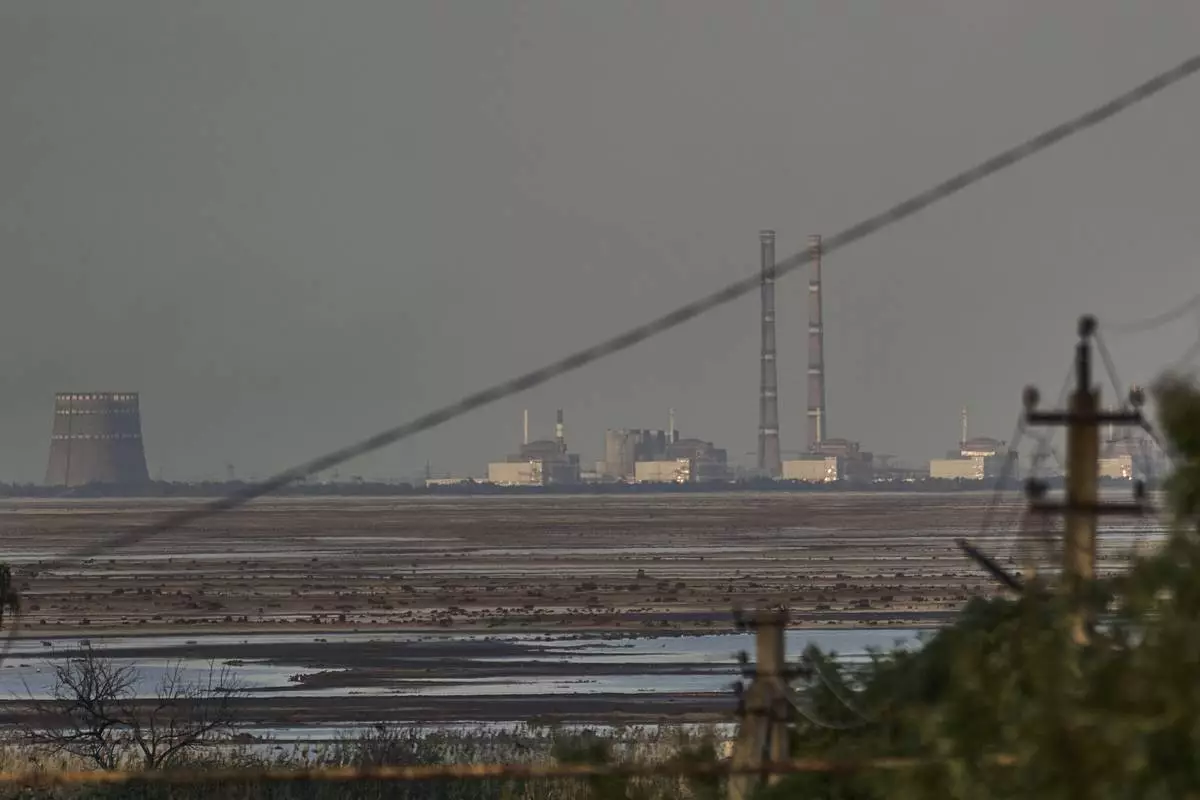
FILE - The Zaporizhzhia nuclear power plant, Europe's largest, is seen in the background of the shallow Kakhovka Reservoir after the dam collapse, in Energodar, Russian-occupied Ukraine, Tuesday, June 27, 2023. Officials at the Russian-controlled Zaporizhzhia Nuclear Power Plant said that the site was attacked Sunday April 7, 2024, by Ukrainian military drones, including a strike on the dome of the plant’s sixth power unit. (AP Photo/Libkos, File)
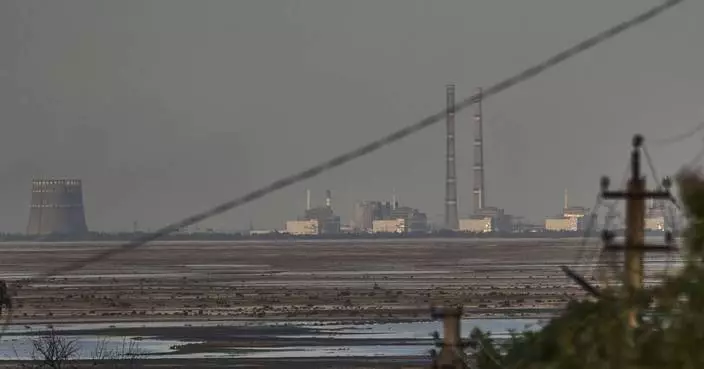
IAEA warns that attacks on a nuclear plant in Russian-controlled Ukraine put the world at risk
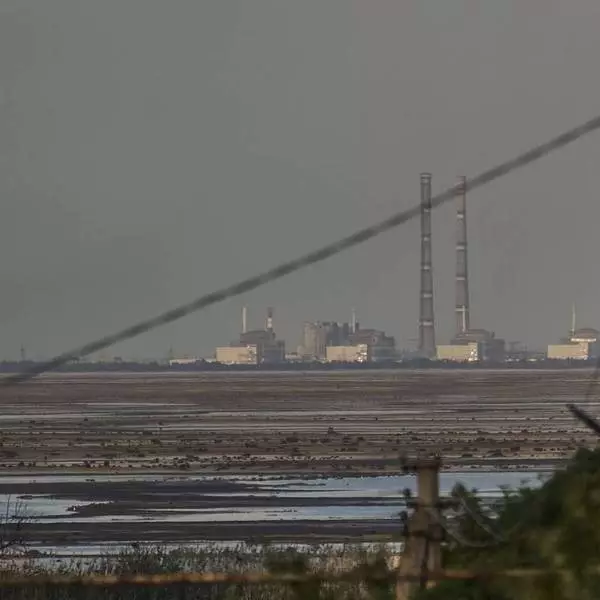
IAEA warns that attacks on a nuclear plant in Russian-controlled Ukraine put the world at risk







